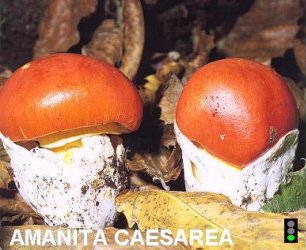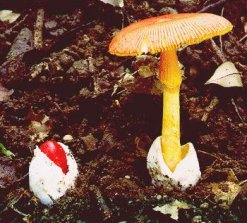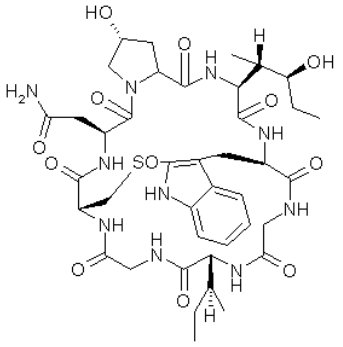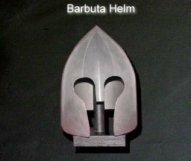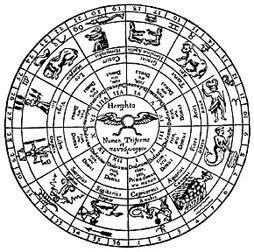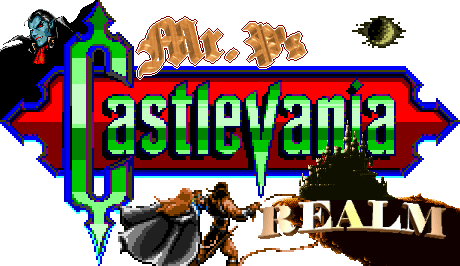
![]() Castlevania
Arsenal Origins
Castlevania
Arsenal Origins ![]()
| Item Name: | Abalone Brooch |
| Games In: | Portrait of Ruin |
| Description: | "Abalone is a genus of gastropods with a number of species ranging from 100 to 130. The outside of the shell is rough and mostly brown, but the inside is richly colored. It has a worldwide distribution." |
| Picture(s): |
 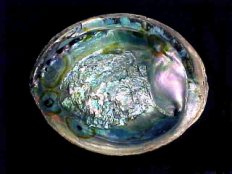 |
| References: | www.fisheries.nsw.gov.au/__data/assets/image/6273/ab.jpg www.mineralminers.com/images/abalone/mins/abam101x.jpg |
| Item Name: | Ada |
| Games In: | Curse of Darkness |
| Description: | "An African ceremonial sword never used as a weapon but during special rituals. The wearing of the ada was reserved for the Oba (King) and indicated its power over life and death." |
| Picture(s): |
 |
| References: | artofafricans.com/odsword.htm |
![]()
![]()
| Item Name: | Adamantine |
| Games In: | Curse of Darkness |
| Description: | "The term 'adamantine' is used as an adjective to refer to nonmetallic, brilliant light reflecting; diamond, for example, is described as having 'adamantine lustre' (as seen in the picture below). In many RPGs, like Final Fantasy or Dungeons and Dragons, adamantine is a mineral used to create weapons and armor." |
| Picture(s): |
 |
| References: | www.bwsmigel.info/Lesson4/wl.4.jpgs/adamantine.luster.jpg |
![]()
![]()
| Item Name: | Agni's Flame |
| Games In: | Portrait of Ruin |
| Description: | "See the description of 'Aguni' in the Enemy Origins section." |
| Item Name: | Alexandrite |
| Games In: | Order of Ecclesia |
| Description: | "A variety of chrysoberyl which contains iron, titanium and chromium as major impurities. The only situation where alexandrite can grow is when Be-rich fluids react with Cr-rich country rocks. The most sensational feature of this stone is its ability to change color: It is green in daylight and red in incandescent light. Alexandrite was first discovered in the Urals and was named after the Russian tsar Alexander II (1818-1881). Since red and green are the principal colors of old Imperial Russia, it became the national stone of the tsarist Russia. (See also Chrysoberyl.)" |
| Picture(s): |
 |
| References: | chemistry.about.com/od/jewelrychemistry/ig/Gemstone-Photo-Gallery/Alexandrite.htm |
| Item Name: | Aluminum |
| Games In: | Curse of Darkness |
| Description: | "Aluminum is a chemical element in the periodic table with the symbol 'Al' and the atomic number 13. It is remarkable for its resistance to corrosion and its light weight. It is used in industries to create millions of different products." |
| Picture(s): |
 |
| References: | resourcescommittee.house.gov/subcommittees/emr/usgsweb/photogallery/images/ Aluminum%20Metal_jpg.jpg |
![]()
![]()
| Item Name: | Amanita |
| Games In: | Dawn of Sorrow |
| Description: | "The genus Amanita (family: 'Amanitacea') consists of about 600 species including some of the most toxic mushrooms. There are two subgenus: Amanita ('Amanita' and 'Vaginatea') and Lepidella ('Lepidella,' 'Amidella,' 'Phalloideae' and 'Validae'). The most dangerous toxin in such mushrooms is the 'alpha-Amanitin'--it attacks RNA polymerase, and around 15% of those poisoned will die in around 10 days. The species shown here are 'Amanita caecarea,' 'Amanita crocea,' 'Amanita farinose,' 'Amanita hemibapha,' 'Amanita muscaria,' 'Amanita pachycolea,' 'Amanita pantherina,' 'Amanita porphyria,' 'Amanita velosa'; this gives you the idea of this family's diversity. The last picture shows the 'alpha-Amanitin.' " |
| Picture(s): |
|
| References: | www.collectivesource.com/fungi/newpages/jpeg/Amanita_pachycolea.JPEG www.in2.dk/svampe/svpic/AmPantherina.jpgwww.in2.dk/svampe/svpic/AmaPorph.jpg www.mykoweb.com/CAF/photos/Amanita_muscaria(tfl-c0229-35).jpg www.mykoweb.com/CAF/photos/Amanita_velosa(ak).jpg www.nara-edu.ac.jp/ECNE/mushroom/photo/himekona.jpg www.nara-edu.ac.jp/ECNE/mushroom/photo/tamago.jpgwww.pilzgalerie.de/Amanita_crocea.jpg www.steve.gb.com/images/molecules/proteins/alpha-amanitin.png www.vicenzanews.it/apt_pro/funghi/fungh15a.jpg |
![]()
![]()
| Item Name: | Amethyst Corset |
| Games In: | Portrait of Ruin |
| Description: | "This is a purple-colored variety of quartz (SiO2). It's not that expensive due to its widespread availability. The name 'amethyst' is Greek and means 'not drunken' (maybe because it was believed to ward off the effects of alcohol). Since the color purple is traditionally the color of royalty, it has been used since dawn of history to adorn the rich and powerful monarchs and rulers." |
| Picture(s): |
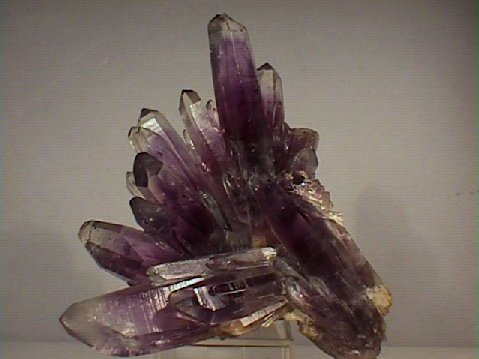 |
| References: | www.galleries.com/minerals/gemstone/amethyst/amethyst.jpg |
| Item Name: | Ankh of Life |
| Games In: | Symphony of the Night |
| Description: | "The Ankh, giver of eternal life, was worn by the Pharaoh Kings of Egypt and was forbidden to be owned by the masses; it was a symbol of the union between Isis and Osiris. Egyptian gods--like Anubis, for example--are often represented with an ankh in the hand." |
| Picture(s): |
 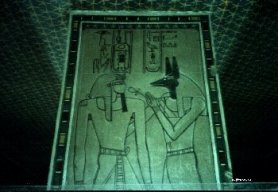 |
| References: | members.optusnet.com.au/fmet/geom/artifact.html members.tripod.com/~majorden/den83.htm |
![]()
![]()
| Item Name: | Aquamarine |
| Games In: | Symphony of the Night and Curse of Darkness |
| Description: | "A blue-colored variety of Beryl. (See also 'beryl circlet.')" |
| Picture(s): |
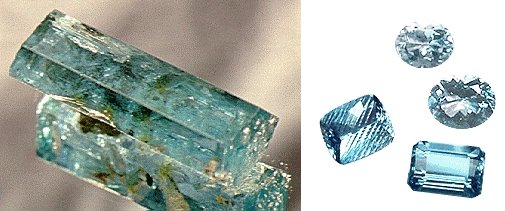 |
| References: |
www.aboutgemstones.com/ quamarine.htm |
![]()
![]()
| Item Name: | Aquarius |
| Games In: | Dawn of Sorrow |
| Description: | "Aquarius, which means 'water' in Latin, is one of the twelve constellations along the zodiac. It is found in a region often called 'The Sea' because there are many constellations tied to nearby waters. In Greek mythology, he is described as a man with bucket from which is pouring a water stream. According to astrology, Aquarius rules the circulatory system and the ankles. Its polar opposite is Leo. One of the songs played in Dracula's Curse and Circle of the Moon is called 'Aquarius.' " |
| Picture(s): |
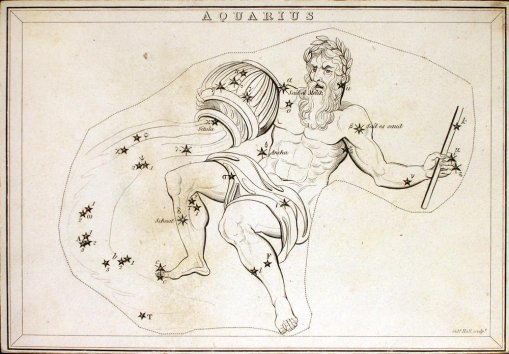 |
| References: | hsci.cas.ou.edu/images/jpg-100dpi-10in/19thCentury/Aspin/1825/Aspin-1825-Aquarius.jpg |
![]()
![]()
| Item Name: | Arachne Hennin |
| Games In: | Portrait of Ruin |
| Description: | "Please read the description of 'Arachne' in the Enemy Origins section." |
| Item Name: | Arctic Ring |
| Games In: | Lament of Innocence |
| Description: | "Arctic is an alternate name for the North Pole. In the game, the Arctic Ring offers some protection against ice attacks." |
| Picture(s): |
 |
| References: | www.geographicguide.com/arctic-map.htm |
![]()
![]()
![]()
![]()
| Item Name: | Arm Guard |
| Games In: | Circle of the Moon |
| Description: | "Protection for the arms." |
| Picture(s): |
 |
| References: | www.larp.com/legioxx/manica.html |
![]()
![]()
| Item Name: | Artemis Shoes |
| Games In: | Portrait of Ruin |
| Description: | "In Greek mythology, Artemis is the daughter of Zeus and Leto and the sister of Apollo. She is the goddess of hunting and the wild but also the goddess of the moon. She is usually depicted naked, holding a bow and arrows. Artemis is known as Diana to the Romans." |
| Picture(s): |
 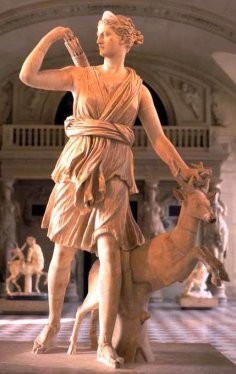 |
| References: | altreligion.about.com/library/graphics/bl_artemis.htm |
| Item Name: | Ascalon |
| Games In: | Aria of Sorrow and Dawn of Sorrow |
| Description: | "The sword of Saint George, patron of England. In legend, Saint George killed a dragon to save the daughter of a king; this legend is an allegory expressing the triumph of Christianity over evil." |
| Picture(s): |
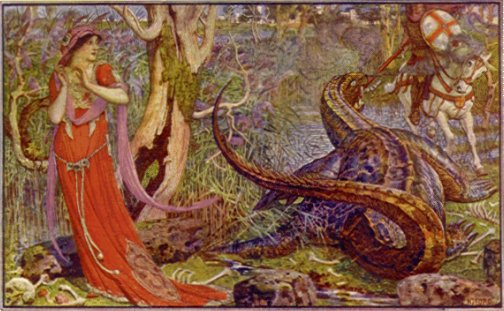 |
| References: | www.mainlesson.com/display.php?author=langm&book=saints&story=patron |
![]()
![]()
| Item Name: | Attica Helmet |
| Games In: | Portrait of Ruin |
| Description: | "Attica is a subdivision in Greece containing Athens, based approximately on the ancient region of Attica (Ancient Greece). The picture shows a money-coin of the ancient Attica, the goddess Athena wearing a feathered crest. (See also Greek Helmet.)" |
| Picture(s): |
 |
| References: | www.ancientresource.com/lots/ancient_jewelry/ancient-coin-necklaces.html |
| Item Name: | Aurora Ring |
| Games In: | Harmony of Dissonance |
| Description: | "Aurora is a phenomenon that happens when solar wind hits the charged particles in the upper part of the atmosphere; these particles collide with gas atoms, causing the atoms to give off light. The best places to see auroras are near the magnetic poles." |
| Picture(s): |
 |
| References: | www.exploratorium.edu/learning_studio/auroras/happen.html |
![]()
![]()
| Item Name: | Badelaire |
| Games In: | Symphony of the Night |
| Description: | "A European sword with a heavy, curved blade that was used during the 16th century." |
| Picture(s): |
 |
| References: | www.agrussell.com/knife_information/knife_encyclopedia/glossary/b.html |
![]()
![]()
| Item Name: | Bakatwa |
| Games In: | Portrait of Ruin |
| Description: | "A ceremonial knife made by the Shona people of Zimbabwe. In Symphony, it's called Bekatowa and is ranked erroneously as a sword." |
| Picture(s): |
 |
| References: | www.finch-and-co.co.uk/provenart/dealer_stock_details.cgi?d_id=109&a_id=21628&print=1 |
| Item Name: | Balmung (also known as "Gram") |
| Games In: | Symphony of the Night, Aria of Sorrow and Dawn of Sorrow |
| Description: | "A magical sword stabbed by Odin into a tree and recovered by Sigmund. Destroyed then reassembled, it was used by Siegfried/Sigurd, the son Sigmund, to kill the dragon Fafnir." |
| Picture(s): |
 |
| References: | homepages.compuserve.de/tar294/balne.htm |
![]()
![]()
| Item Name: | Bamboo Sword and Takemitsu |
| Games In: | Curse of Darkness |
| Description: | "The Shinai is a Japanese practice-sword made of four bamboo slats held together by two pieces of leather." |
| Picture(s): |
 |
| References: | www.evl.uic.edu/spiff/KendoBlog/images/Shinaiparts.jpg |
![]()
![]()
![]()
![]()
| Item Name: | Bardiche |
| Games In: | Curse of Darkness |
| Description: | "Also called 'long poleaxe,' a bardiche is a kind of polearm used in medieval and renaissance Europe, especially in Eastern Europe. It consists of a blade mounted on a pole, usually attached via two sockets. Even if it is long for an axe, it's one of the shortest polearm. It relies on the weight of its heavy blade for damage dealt." |
| Picture(s): |
 |
| References: | www.armemedievale.fr/boutique/index.php?cPath=63 |
![]()
![]()
| Item Name: | Bascinet |
| Games In: | Harmony of Dissonance |
| Description: | "The great helm was discarded in favor of the bascinet because of the superior vision, glancing surface, and lightweight design. The dominant helmet of the 15th century, the Armet was an evolution of the bascinet. (See also 'armet.')" |
| Picture(s): |
 |
| References: | www.thesteelsource.com/html/r8110europeanbascinet.htm |
![]()
![]()
| Item Name: | Baselard |
| Games In: | Symphony of the Night, Aria of Sorrow, Dawn of Sorrow and Portrait of Ruin |
| Description: | "The second major family of dagger is styled after the Rondel. The Baselard appeared frequently during the 14th and 15th centuries. The dagger's name comes from the city of Basel, which is found in Switzerland." |
| Picture(s): |
 |
| References: | www.interknife.co.uk/shopping/baselard.html |
![]()
![]()
| Item Name: | Bastard Sword |
| Games In: | Symphony of the Night, Aria of Sorrow and Curse of Darkness |
| Description: | "Since the 13th century, some swords were created to provide more room on the grip for use with both hands: Some were single-hand, with enough room for both hands; some were made as two-handed but were agile enough to be held in one; and others were in between. Swords that were neither one nor two-handed were called 'bastard swords.' " |
| Picture(s): |
 |
| References: | www.myarmoury.com/review_pmc_bast1.html |
![]()
![]()
![]()
![]()
| Item Name: | Battle Axe |
| Games In: | Dawn of Sorrow, Curse of Darkness and Portrait of Ruin |
| Description: | "This is an axe specifically designed as a weapon. Although it has existed since at least 3,000 years B.C., it was most common in northern Europe from the 9th-16th centuries. The picture shows the battle-axe used by a soldier of King Harold during the Battle of Hastings (1066)." |
| Picture(s): |
 |
| References: | www.spartacus.schoolnet.co.uk/MEDaxe.htm |
![]()
![]()
| Item Name: | Beryl Circlet |
| Games In: | Symphony of the Night |
| Description: | "Beryl is a Silicate (Be3Al2(Si6O18)) whose name comes from the Beryllium element. Two famous varieties of Beryl are Aquamarine and Emeraude. Its most important beds are found in Colombia and Brasil. (See also 'aquamarine' and 'emerald cloak.')" |
| Picture(s): |
 |
| References: | mineral.galleries.com/minerals/silicate/beryl/beryl.htm |
![]()
![]()
| Item Name: | Bhuj |
| Games In: | Dawn of Sorrow and Portrait of Ruin |
| Description: | "This is rare type of weapon from Northwest India. It has a short blade, which gives it the appearance of more a short machete or an axe (rather than a knife). Its rear end often conceals a sharp dagger." |
| Picture(s): |
 |
| References: | www.oriental-arms.co.il/item.php?id=1909 |
![]()
![]()
| Item Name: | Black Belt |
| Games In: | Aria of Sorrow, Dawn of Sorrow and Curse of Darkness |
| Description: | "Invented by Jigoro Kano, the founder of judo, the black belt was first awarded in the 1880's; today it is often used in martial arts to mark the level of a practitioner." |
| Picture(s): |
 |
| References: | www.dancepro.co.jp/action-machine/phot/black-belt-mishiro.gif |
![]()
![]()
| Item Name: | Book of Death |
| Games In: | Portrait of Ruin |
| Description: | "The Book of the Death is the name created by Egyptologists for a group of mortuary spells written on sheets of papyrus covered with magical texts and accompanying illustrations called 'vignettes.' They were placed with the dead in order to help them pass through the dangers of the underworld and attain an afterlife. Some of the texts and vignettes were also found on the walls of tombs and on coffins. These texts are divided into individual spells or chapters (nearly two hundred in total), although no papyrus contains them all. The earliest records of the Book of the Dead date back to the mid-fifteenth century, B.C., but some of the spells have their origins in the Pyramids Texts carved more than 1000 years earlier. In the Book of the Death, the sun-god Ra is no longer supreme with regard to the afterlife in deference to Osiris, the king of the underworld. The picture below shows a sample from the Book of the Death; the gods Osiris (shown right) and Anubis (middle) are visible." |
| Picture(s): |
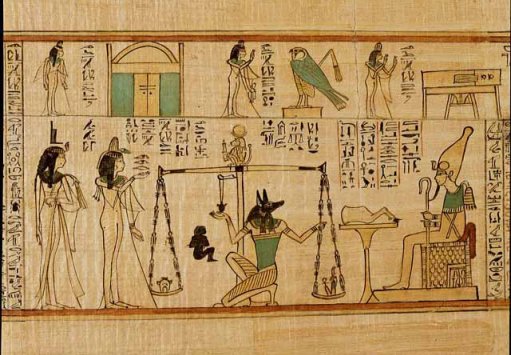 |
| References: | www.metmuseum.org/explore/newegypt/images/large/book.jpg |
| Item Name: | Boomerang and Fire Boomerang |
| Games In: | Symphony of the Night, Dawn of Sorrow and Curse of Darkness |
| Description: | "Boomerangs are probably the first heavier-than-air flying machines ever invented by human beings. It isn't known for sure how the returning boomerang was invented, but some people speculate that it was developed from the idea of 'throwing-sticks' used by Australian Aborigines and some other tribal people around the world, like the Navajo Indians in America. Boomerangs are often associated only with Australia, probably because Aborigines are amongst the few cultures in the world to have never developed a bow and arrow." |
| Picture(s): |
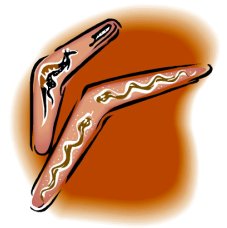 |
| References: | boomerang.sourceforge.net/boomerangs.jps |
![]()
![]()
| Item Name: | Brigandine |
| Games In: | Harmony of Dissonance and Curse of Darkness |
| Description: | "An armor constructed by lining the inside of a cloth or leather garment with rigid plates. The first Brigandines appeared in China and were later found worldwide." |
| Picture(s): |
 |
| References: | members.aol.com/dargolyt/TheForge/brigand.htm |
![]()
![]()
| Item Name: | Brisingeman |
| Games In: | Lament of Innocence |
| Description: | "The necklace of the goddess Freya; it gave support to any army to which she favoured on the battlefield." |
| Picture(s): |
 |
| References: | www.free-definition.com/Brisingamen.html |
![]()
![]()
